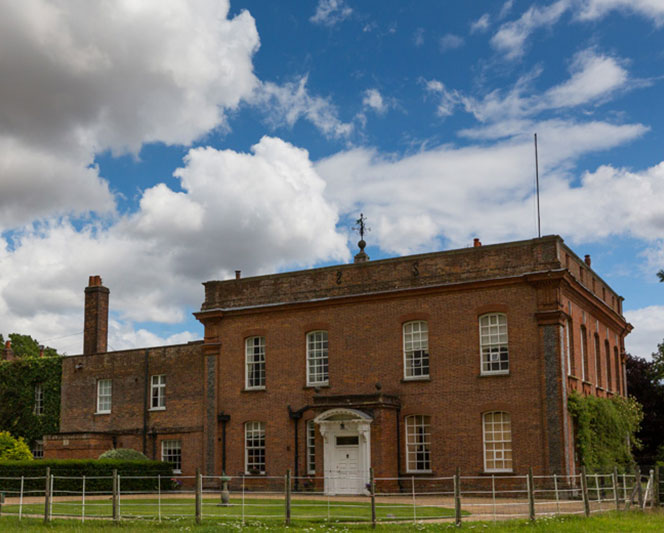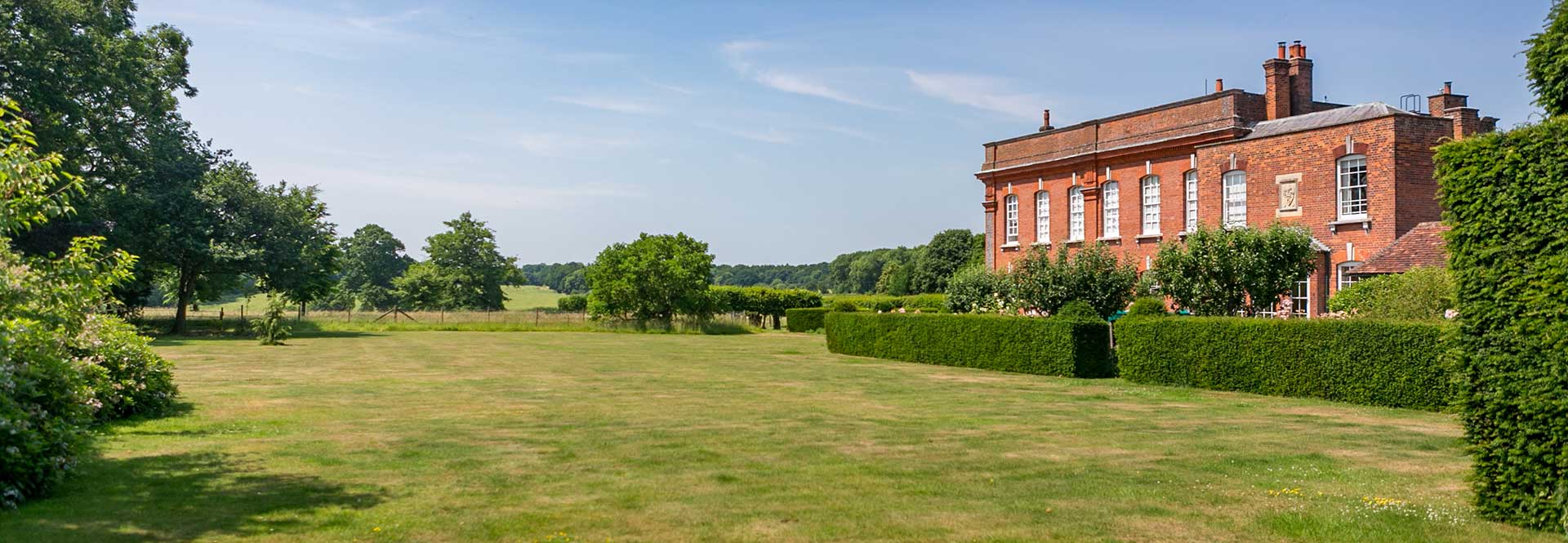Farming
As I write this Storm Babet has arrived in style, bringing with it 50mm of rain so far and an end to the relatively dry early autumn. Thankfully we finished planting just as the heavens opened, though we now wait anxiously to see what effect the deluge has had on the seed.
First to be planted was the wheat along Gaddesden Row and around Upperwood Farm. This went in in good conditions and is now mainly up and visible “in the row”. As it had a decent head start on the weather it is much less vulnerable to the wet than later plantings, and so far continues to look good.
Next to go were fields behind Bridens Camp and down to the Red Lion, and the three fields opposite the Garden Centre and behind Gade Valley Cottages. These have all been planted with wheat, again in good conditions. The arrival of the storm however has prevented us from applying a pre-emergent herbicide to control weeds, and it may be that we will now be chasing weed control for the remainder of the year.
All of these conventional wheat crops have been planted with a variety called Dawsum, which is a low grade milling wheat with excellent disease resistance. We have saved the seed from last year, and have cleaned it prior to planting with our recommissioned 50+yr old grain cleaner.
Sometimes known as a dresser, this machine carries out a variety of functions to improve the quality of the seed. Firstly the seed is dropped into the top of it by an auger. This stream of grain is then spread out over the width of the machine by a feed roller that prevents it all bunching up in one place. Once the grain passes the roller, air is sucked though it, removing light particles, chaff, straw and weed seeds. The grain then drops down onto a moving body that contains a number of progressively smaller sieves. This whole body shakes back and forth all powered by an electric motor, with larger impurities coming off the top of the sieves first, and directed into a waste bin, cleaned seed coming out from the middle, and smaller impurities coming out from the layer of sieves below. The final process is that air is again sucked though the cleaned grain to remove any light fragments and dust that have made it this far, and finally the cleaned grain drops out of the bottom. It has taken a bit of carpentry, plenty of sticky belt dressing (to prevent ancient drive belts from slipping) and a bit of sweat, but the machine did successfully manage to clean all of our seed requirements this year, which was a good result. There is also a healthy crop of weeds now growing in the yard, where the output from the fans blew the impurities, which is also a good sign!
The final wheat to be planted was the Wildfarmed, which has gone in to Elm Tree Park, behind the old Chequers, and Bingham’s Bottom (named after a former rector of the Parish, and the fact that runs down to the bottom of a hill, rather than any anatomical reference…) As with this crop last year, this is a mixture of heritage wheat varieties that is grown alongside another crop in the same field, in this case beans. With no spraying permitted, it was necessary to run in front of the seed drill with a light cultivator to try to kill weeds already growing.
Once this had been planted it was a mad dash to plant some beans in areas where the oilseed rape establishment had failed, before the arrival of the storm. This is generally around the outside of the fields where the wildlife has eaten the emerging OSR plants. Assuming these beans grow (never guaranteed…) there should be a feast for pollinators next spring and summer as these plants flower one after another.
Back at the yard we have been busy loading lorries with this year’s harvest, and this morning saw the last load of beans go off to Ipswich docks and onto a boat bound for Egypt. It also saw the penultimate load of organic wheat head off to Doves Farm foods, as well as some feed wheat off to a bio-ethanol plant in the midlands.
With planting now completed, the next few months will see plenty of maintenance jobs and yard work, as well as slug patrol on the newly emerging wheat. We have slug traps out in the fields and are monitoring these daily for signs of activity, which so far has been slight, though this may change with the arrival of the storm.
In other news we have just taken delivery of half a tonne of bird seed for winter feeding, courtesy of the North Chilterns Farmer Cluster. This will fed throughout the winter, both through designated feeders (basically an industrial scale bird table) and spread on the ground; different species have different feeding patterns, and a combination of the two should cover most bases. The target species of these are predominantly the smaller farmland birds, and combined with our increased area of winter bird food plots should see plenty of nourishment available through the winter.
We have also been planning our hedge planting programme with the Chilterns Conservation Board, and will be delivering about 1,150m over the next couple of years, replacing some hedges that were lost in the mid 20th century’s drive for more production, and using the 1837 tithe map for reference. We have a target list of species to plant, which will include a mix of Hawthorn, Hazel, Field Maple, Mountain Ash, Hornbeam, Wayfaring Tree, Guelder Rose, Spindle and Wild Cherry.
GFJH
As I write this Storm Babet has arrived in style, bringing with it 50mm of rain so far and an end to the relatively dry early autumn. Thankfully we finished planting just as the heavens opened, though we now wait anxiously to see what effect the deluge has had on the seed.
First to be planted was the wheat along Gaddesden Row and around Upperwood Farm. This went in in good conditions and is now mainly up and visible “in the row”. As it had a decent head start on the weather it is much less vulnerable to the wet than later plantings, and so far continues to look good.
Next to go were fields behind Bridens Camp and down to the Red Lion, and the three fields opposite the Garden Centre and behind Gade Valley Cottages. These have all been planted with wheat, again in good conditions. The arrival of the storm however has prevented us from applying a pre-emergent herbicide to control weeds, and it may be that we will now be chasing weed control for the remainder of the year.
All of these conventional wheat crops have been planted with a variety called Dawsum, which is a low grade milling wheat with excellent disease resistance. We have saved the seed from last year, and have cleaned it prior to planting with our recommissioned 50+yr old grain cleaner.
Sometimes known as a dresser, this machine carries out a variety of functions to improve the quality of the seed. Firstly the seed is dropped into the top of it by an auger. This stream of grain is then spread out over the width of the machine by a feed roller that prevents it all bunching up in one place. Once the grain passes the roller, air is sucked though it, removing light particles, chaff, straw and weed seeds. The grain then drops down onto a moving body that contains a number of progressively smaller sieves. This whole body shakes back and forth all powered by an electric motor, with larger impurities coming off the top of the sieves first, and directed into a waste bin, cleaned seed coming out from the middle, and smaller impurities coming out from the layer of sieves below. The final process is that air is again sucked though the cleaned grain to remove any light fragments and dust that have made it this far, and finally the cleaned grain drops out of the bottom. It has taken a bit of carpentry, plenty of sticky belt dressing (to prevent ancient drive belts from slipping) and a bit of sweat, but the machine did successfully manage to clean all of our seed requirements this year, which was a good result. There is also a healthy crop of weeds now growing in the yard, where the output from the fans blew the impurities, which is also a good sign!
The final wheat to be planted was the Wildfarmed, which has gone in to Elm Tree Park, behind the old Chequers, and Bingham’s Bottom (named after a former rector of the Parish, and the fact that runs down to the bottom of a hill, rather than any anatomical reference…) As with this crop last year, this is a mixture of heritage wheat varieties that is grown alongside another crop in the same field, in this case beans. With no spraying permitted, it was necessary to run in front of the seed drill with a light cultivator to try to kill weeds already growing.
Once this had been planted it was a mad dash to plant some beans in areas where the oilseed rape establishment had failed, before the arrival of the storm. This is generally around the outside of the fields where the wildlife has eaten the emerging OSR plants. Assuming these beans grow (never guaranteed…) there should be a feast for pollinators next spring and summer as these plants flower one after another.
Back at the yard we have been busy loading lorries with this year’s harvest, and this morning saw the last load of beans go off to Ipswich docks and onto a boat bound for Egypt. It also saw the penultimate load of organic wheat head off to Doves Farm foods, as well as some feed wheat off to a bio-ethanol plant in the midlands.
With planting now completed, the next few months will see plenty of maintenance jobs and yard work, as well as slug patrol on the newly emerging wheat. We have slug traps out in the fields and are monitoring these daily for signs of activity, which so far has been slight, though this may change with the arrival of the storm.
In other news we have just taken delivery of half a tonne of bird seed for winter feeding, courtesy of the North Chilterns Farmer Cluster. This will fed throughout the winter, both through designated feeders (basically an industrial scale bird table) and spread on the ground; different species have different feeding patterns, and a combination of the two should cover most bases. The target species of these are predominantly the smaller farmland birds, and combined with our increased area of winter bird food plots should see plenty of nourishment available through the winter.
We have also been planning our hedge planting programme with the Chilterns Conservation Board, and will be delivering about 1,150m over the next couple of years, replacing some hedges that were lost in the mid 20th century’s drive for more production, and using the 1837 tithe map for reference. We have a target list of species to plant, which will include a mix of Hawthorn, Hazel, Field Maple, Mountain Ash, Hornbeam, Wayfaring Tree, Guelder Rose, Spindle and Wild Cherry.
GFJH


